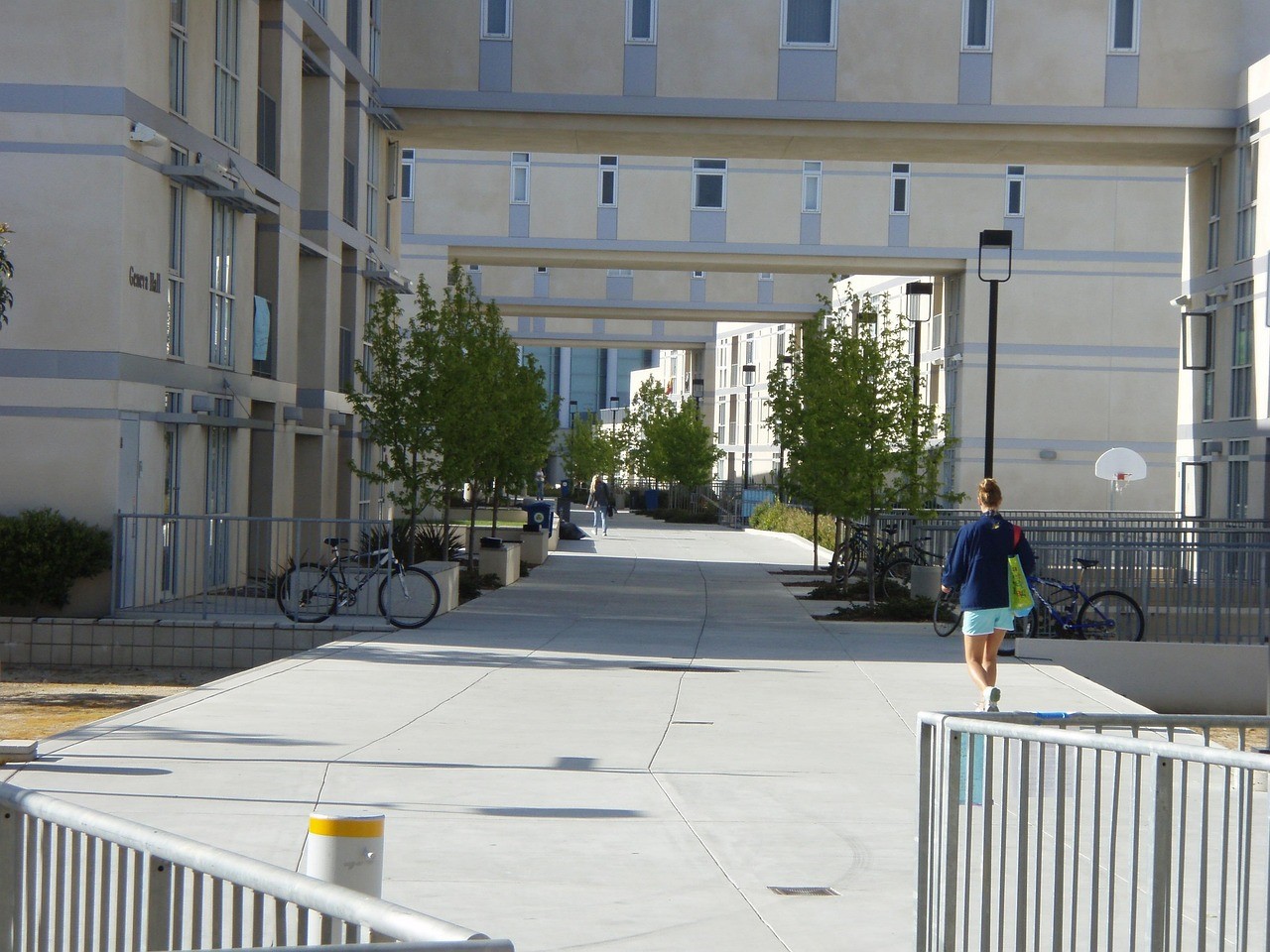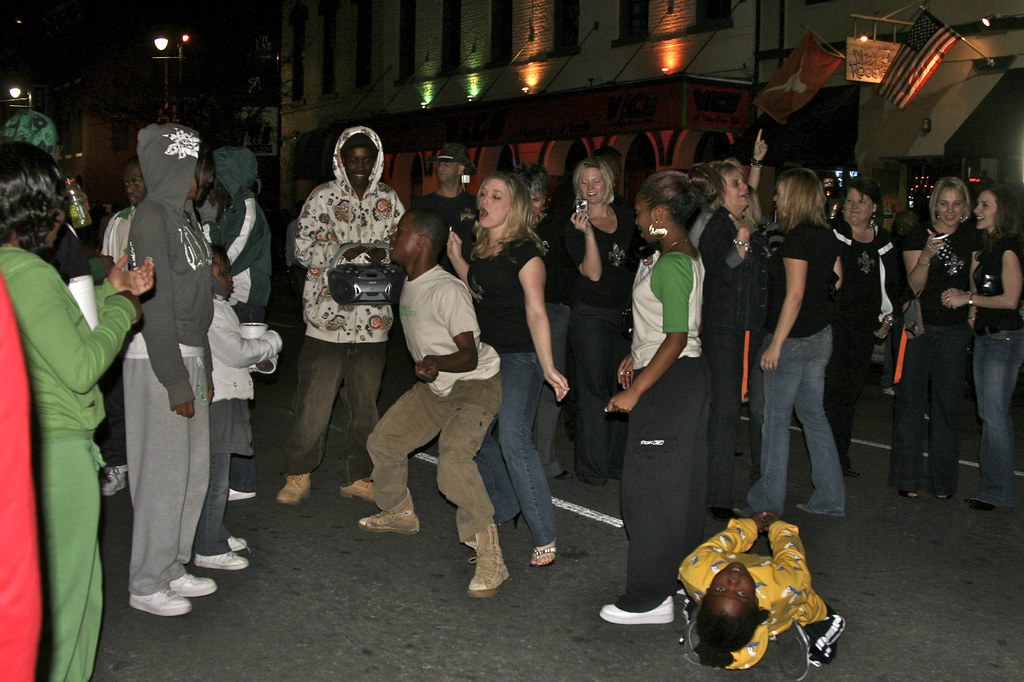UCSD acceptance rate is 28% for the Class of 2029. Over 130,000 first-year applications were received for fall 2025, according to preliminary statistics from the Office of Admission. Last year, UC San Diego accepted roughly 26.75% of applicants, reflecting a trend of rising acceptance rates. If you’re curious about the University of California, San Diego’s acceptance rate, you’ve come to the right place. We provide all the statistics of acceptance rate, average GPA, admission requirements, tuition, costs, and everything you need to know about UC San Diego.
UC San Diego: An Overview
The University of California, San Diego is located in San Diego, a city in Southern California that basks in year-round sunshine and ranks as the sixth-largest city in the United States. University of California, San Diego has been named the country’s sixth best public university by U.S. News & World Report in its annual Best Colleges rankings. Founded in 1959, despite its relatively brief history of just over fifty years, it has risen to become one of America’s premier research-focused universities through its outstanding academic achievements and formidable scientific capabilities. Below is a table to help you learn about basic information about the University of California system.
| Category | Information |
|---|---|
| Institution Type | Public |
| Founded | 1960 |
| Campus Setting | City |
| Campus Size | 1,976 acres |
| Academic Calendar | Quarter-based |
| Student-Faculty Ratio | 19:1 |
| Total Undergraduate Enrollment (Fall 2024) | 34,955 |
| Rankings (2026 Best Colleges) | • National Universities: #29 • Top Public Schools: #6 |
| Acceptance Rate | 28% |
| Tuition & Fees (2024-25) | • In-State: $20,505 • Out-of-State: $58,107 |
| Financial Aid | • 53% of first-year students receive need-based aid • Average net price (federal loan recipients): $15,069 |
| Graduation Rate | 86% (four-year) |
| Post-Graduation | Median salary six years after graduation: $65,669 |
UCSD Acceptance Rate
UCSD’s acceptance rate for first-year students in Fall 2025 is 28.4%, which means that for every 100 applicants, 28 are admitted. This year, UC San Diego has 136,740 applicants and 38,846 accepted. The acceptance rate serves as a reflection of the university’s selectivity. If you want to stand out among other applications, you should focus on a strong academic record with a high GPA in a rigorous curriculum, demonstrate compelling essays, and showcase leadership and diverse achievements in extracurricular activities.
UC San Diego Acceptance Rate Trends
The table below shown UC San Diego acceptance rate statistices from Classes of 2029 — 2019. Based on the historical data, the acceptance rate at UC San Diego has demonstrated a clear trend of increasing selectivity over the past decade, with a notable inflection point. Before the class of 2025, the UCSD acceptance rate was stable around 32-36%. For classes of 2026, the admission rate has declined sharply to under 30%, and in the following years, the admission rate never exceeded 30%. This significant drop coincides with a substantial rise in application volume, indicating that UC San Diego is becoming progressively more competitive as it receives a greater number of applications for a comparatively stable number of admission offers.
| UC San Diego Class Year | Total Applications Received | Total Applications Accepted | Overall Acceptance Rate |
|---|---|---|---|
| Class of 2029 | 136,740 | 38,846 | 28.40% |
| Class of 2028 | 134,444 | 35,984 | 26.77% |
| Class of 2027 | 130,845 | 32,403 | 24.76% |
| Class of 2026 | 131,254 | 31,274 | 23.83% |
| Class of 2025 | 118,410 | 40,629 | 34.31% |
| Class of 2024 | 100,080 | 38,325 | 38.29% |
| Class of 2023 | 99,133 | 32,062 | 32.34% |
| Class of 2022 | 97,901 | 29,602 | 30.24% |
| Class of 2021 | 88,428 | 30,212 | 34.17% |
| Class of 2020 | 84,209 | 30,273 | 35.95% |
| Class of 2019 | 78,056 | 26,509 | 33.96% |
No Early Action and Early Decision for UC San Diego
UC San Diego, like all UC schools, does not offer Early Action (EA) or Early Decision (ED) programs. All first-year applicants apply within the same single application cycle. The main benefit of not having Early Decision/Action is fairness and flexibility for you.
As a large public university, UC San Diego’s goal is to be fair and accessible to a huge number of students from all backgrounds. A single deadline simplifies the process and ensures every application is reviewed together under the same criteria. It prevents advantages for students who might have more resources to prepare applications early. In short, the lack of EA/ED gives you more time, more choices, and less pressure, which is generally better for students.
Here are more details of the benefits:
You Can Compare Offers: Since you apply to all schools at the same time, you get all your acceptance and financial aid letters back at around the same time in March/April. This lets you compare options side-by-side to see which school is the best fit for you.
Less Pressure: There is no special “early” deadline to stress about. You have the full fall semester to work on your application.
| Event | Key Date(s) |
|---|---|
| Application System Opens | August 1 |
| Application Submission Period | October 1 to early December |
| Application Deadline | Early December (e.g., December 1 or December 2 for the 2025-2026 cycle) |
| Financial Aid Application (FAFSA/CADAA) Deadline | March 2 |
| Admission Decisions Released | Mid-to-late March |
| Intent to Register (SIR) Deadline | May 1 |
UCSD Acceptance Rate: Transfer Students
UC San Diego’s transfer acceptance rate for the application year fall 2025 is 52.7%, Transfer students enjoy a much higher acceptance rate than first-year students, with 23,441 applicants and 12,355 accepted. The GPA range for FALL 2025 transfer students is 3.55-3.94.
UCSD transfers students primarily from California community colleges, but also from other UC campuses, four-year institutions, and accredited international post-secondary institutions. The university’s admissions profile shows a high percentage of admitted transfers come from a California Community College (CCC), for example, a CCC number, with some also being international students from these colleges.
Like most universities, UCSD has a higher transfer acceptance rate than its regular decision acceptance rate. To be eligible for transfer admission to UCSD, you generally need to meet the following core requirements:
- Completion of Lower-Division Preparation: You must complete the necessary lower-division preparation courses for your intended major and for the university’s general education requirements.
- Grade Point Average (GPA): You must have a minimum GPA of 2.4 (or 2.8 for non-California residents) in all transferable courses. However, please be aware that many majors are more competitive and will require a significantly higher GPA.
- Good Academic Standing: You should be in good standing at the last institution you attended.
UCSD Transfer Applicants: | UCSD Transfer Admits: | UCSD Transfer Admit Rate: |
|---|---|---|
| 23,441 | 12,355 | 52.70% |
Key Dates for UC San Diego Transfer Applicants
For transfer applicants to UC San Diego for the Fall term, admission decisions are typically posted online in the applicant portal by April 30. Here are some key dates if you are considering transferring to UC San Diego.
- Application Submission: The University of California application is available starting in August, with the application filing period ending on December 2.
- Transfer Academic Update (TAU): You must complete your TAU, which provides updated academic information, by January 31.
- Admission Decision Release: Transfer decisions are posted on the UC San Diego applicant portal by April 30.
- Statement of Intent to Register (SIR): The deadline to accept your offer of admission and pay the required deposit is June 1.
- Final Transcripts: Your final, official high school and college transcripts must be submitted to UC San Diego by July 1.
UCSD Acceptance Rate: In-State vs. Out-of-State Students
From the data, UC San Diego’s acceptance rate for in-state students is higher than for out-of-state students. This is because UC San Diego is a service for the people of California; it’s funded by California taxpayers, so its main job is to educate students from California.
Because of this, UC San Diego follows rules to make sure most of the students it accepts are from in-state. This means there are more spots available for California applicants, which makes the acceptance rate for them higher.
UCSD In-State Acceptance Rate: 27.6%
- Applicants: 112,634
- Admits: 31,093
UCSD Out-of-State Acceptance Rate: 22.44%
- Applicants: 21,821
- Admits: 4,896
UCSD Rankings
UC San Diego’s continuously ranked as one of the top public universities in the country in U.S. News & World Report’s Best Colleges rankings. Its high ranking attracts more applicants, which leads to greater selectivity and a lower acceptance rate.
- #29 in National Universities
- #6 in Top Public Schools
- #182 in Best Value Schools
Psychology, computer science, engineering, and economics are among the most popular courses at UC San Diego. The following disciplines in UC San Diego were ranked in the nation’s top 10 overall:
- biocomputing/bioinformatics/biotechnology (No. 2)
- biomedical (No. 7)
- cybersecurity (No. 7)
- data analytics/science (No. 8)
- computer systems (No. 9)
UCSD Admission Requirements
As one of the best UC schools, UCSD’s admission requirements significantly influence its acceptance rate by creating a highly selective environment. University of California of San Diego seeks students with strong academic records, including completion of rigorous high school coursework (the A-G requirements) with high grades, competitive standardized test scores (for applicable programs), and compelling personal insight questions. Additionally, factors like extracurricular achievements, leadership experience, and special talents play a critical role. These comprehensive requirements ensure that only the most qualified applicants are admitted.
The University of California of San Diego acceptance rate is 28%, but don’t let that number intimidate you, let it inspire you. If you dream of joining the vibrant Triton community, it’s about more than just meeting requirements, here are some admission requirements you need to know.
UCSD average weighted GPA:
25th percentile: 4.11
75th percentile: 4.29
UCSD average ACT score:
25th percentile: 29
75th percentile: 34
UCSD average SAT score:
25th percentile: 1330
75th percentile: 1510
English Requirements for International Students:
TOEFL minimum scores
- Internet-based: 83
- Paper-based: 550
IELTS minimum score of 7 (Academic module)
AP Exam accepted scores
- English Language and Composition: 3, 4, 5
- English Literature and Composition: 3, 4, 5
IB Exam accepted scores
- English (Lang. A) higher level: 5, 6, 7
- English (Lang. A) standard level: 6, 7
Duolingo English Test (DET): Minimum score of 115
| Phase | Time Period | Key Actions & Deadlines |
|---|---|---|
| Preparation & Research | January – July (before application year) | Research majors, complete prerequisite courses, and plan your application strategy. |
| Application Period | August 1 – November 30 (of the year before transfer) | The UC application portal opens on August 1. Submit your application by November 30. This is the absolute deadline for all UC campuses. |
| Post-Submission Period | December – February | Submit official transcripts and any other requested documents by the specified deadlines (usually in January). |
| Decision Release | Mid-to-Late April | Admission decisions are typically released for transfer students during this period. |
| Intent to Register | By June 1 | If admitted, you must submit your Statement of Intent to Register (SIR) to secure your spot. |
| Final Steps & Enrollment | June – September | Submit final official transcripts, complete housing contracts, attend orientation, and enroll in classes. |
UCSD Tuition
Here is the cost of attendance for undergraduate students in UCSD, including tuition fees, living expenses, and other costs. As a public university, UCSD’s tuition is more affordable for CA residents, because the core mission of the University of California system is to serve the students of California. Offering lower tuition to residents is a direct way to fulfill this commitment and support the state’s educational and economic goals. For students from other states or countries, the “Non-Resident Supplemental Tuition” is added.
| Cost of Attendance | Living with Parents | On Campus | Off Campus |
|---|---|---|---|
| Components of CA Resident Tuition and Fees | $20,505 | $20,505 | $20,505 |
| UC Systemwide Tuition and Fees: $14,934 UC San Diego Campus Fees: $2,445 UC San Diego Health Fee: $2,961 (may be waived if covered by private insurance that is equivalent or better) UC San Diego One-time Document Fee: $165¹ |
|||
| UCSD Campus Fee: $2,445 | |||
| UCSD Health Fee: $2,4961 | |||
| UCSD One-Time Document Fee: $165 | |||
| Living Expenses | $8,970 | $19,629 | $19,527 |
| Books, course materials, supplies, and equipment | $1,365 | $1,365 | $1,365 |
| Miscellaneous Personal Expenses | $2,688 | $2,364 | $2,511 |
| Transportation Expenses | $3,000 | $1,047 | $2,181 |
| Estimated CA Resident Cost Totals | $36,528 | $44,910 | $46,089 |
| Direct Costs (Non-CA Resident) | |||
| Non-California Resident Supplemental Tuition³ | $37,602 | $37,602 | $37,602 |
| Estimated Non-California Resident Cost Totals | $74,130 | $82,512 | $83,691 |
UC San Diego Student Housing
uhomes.com is a reliable rental platform that offers a range of purpose-built UCSD student housing. Each building offers detailed property information, including addresses, floor plans, rental prices, and facilities. Our purpose-built student accommodations near UC San Diego are within walking distance to campus, provide furnished interiors and modern amenities like swimming pools, gyms, study rooms, a business center, social lounges, and rooftop BBQ areas. Popular PBSA includes Union Grantville, 7524 Charmant Dr, San Diego, Victory On Paseo, and 6nineteen, San Diego. Browse housing listings on uhomes.com, and you can easily find an ideal room in proximity to UCSD via driving, cycling, or walking.
Conclusion about UCSD Acceptance Rate
UC San Diego’s acceptance rate clearly illustrates its evolution into a highly selective, top-tier public university. Historically more accessible, the rate has sharply declined in recent years, dropping from over 38% to around 26-28% for the most recent incoming classes. This trend is directly connected to UCSD’s rising national and global ranking, which has attracted a record-breaking number of applicants. As application volume surges, the university can be more selective, fostering a cycle of increasing prestige and competitiveness.
A key factor shaping these statistics is UCSD’s public mission. Prioritizing California residents, supported by state funding and enrollment caps on non-residents, means the overall acceptance rate tells only part of the story; the rate for in-state students is notably higher. Ultimately, the declining acceptance rate signifies UCSD’s growing stature. It is no longer just a backup option but a premier destination where admission is increasingly competitive, reflecting its status as a world-class research institution.
FAQ about UCSD Acceptance Rate
From UC San Diego’s official website, the minimum GPA requirements are different for California residents and non-California residents. For California residents, you must earn a GPA of 3.0 (or better) with no grade lower than “C.” For non-California residents, including International applicants, you must earn a GPA of 3.4 (or better) with no grade lower than a “C.”
UC San Diego (UCSD) is harder to get into than UC Santa Barbara (UCSB), with a lower acceptance rate of around 27% compared to UCSB’s 33%. This lower acceptance rate indicates a more competitive admissions process at UCSD, suggesting a higher degree of selectivity when choosing from its applicant pool.
No, UC San Diego (UCSD) is not an Ivy League school. However, UCSD is recognised as a “Public Ivy,” a term used to describe public universities that offer a high-quality education comparable to that of the Ivy League schools. Except for UCSD, Other UC campuses, such as Berkeley, Los Angeles, and Irvine, are also considered Public Ivies.
UCLA and UC Berkeley are the hardest; UCLA acceptance rate is 9%, UC Berkeley acceptance rate is 11%, both of them are under 15%, making them as selective as schools like the University of Notre Dame and USC. Despite being competitive, both schools offer a lot. UC Berkeley, the oldest UC, is known for its top academics, active campus life, and proximity to San Francisco. UCLA is known for it’s consistently ranks #1 among public universities in the U.S. News & World Report and is seen as having a better balance between academics and social life. UCLA has strong social sciences and humanities programs, world-class theatre, film, and television programs. UCLA vs. UC Berkeley, which is better, the choice depends on individual priorities and academic interests.








